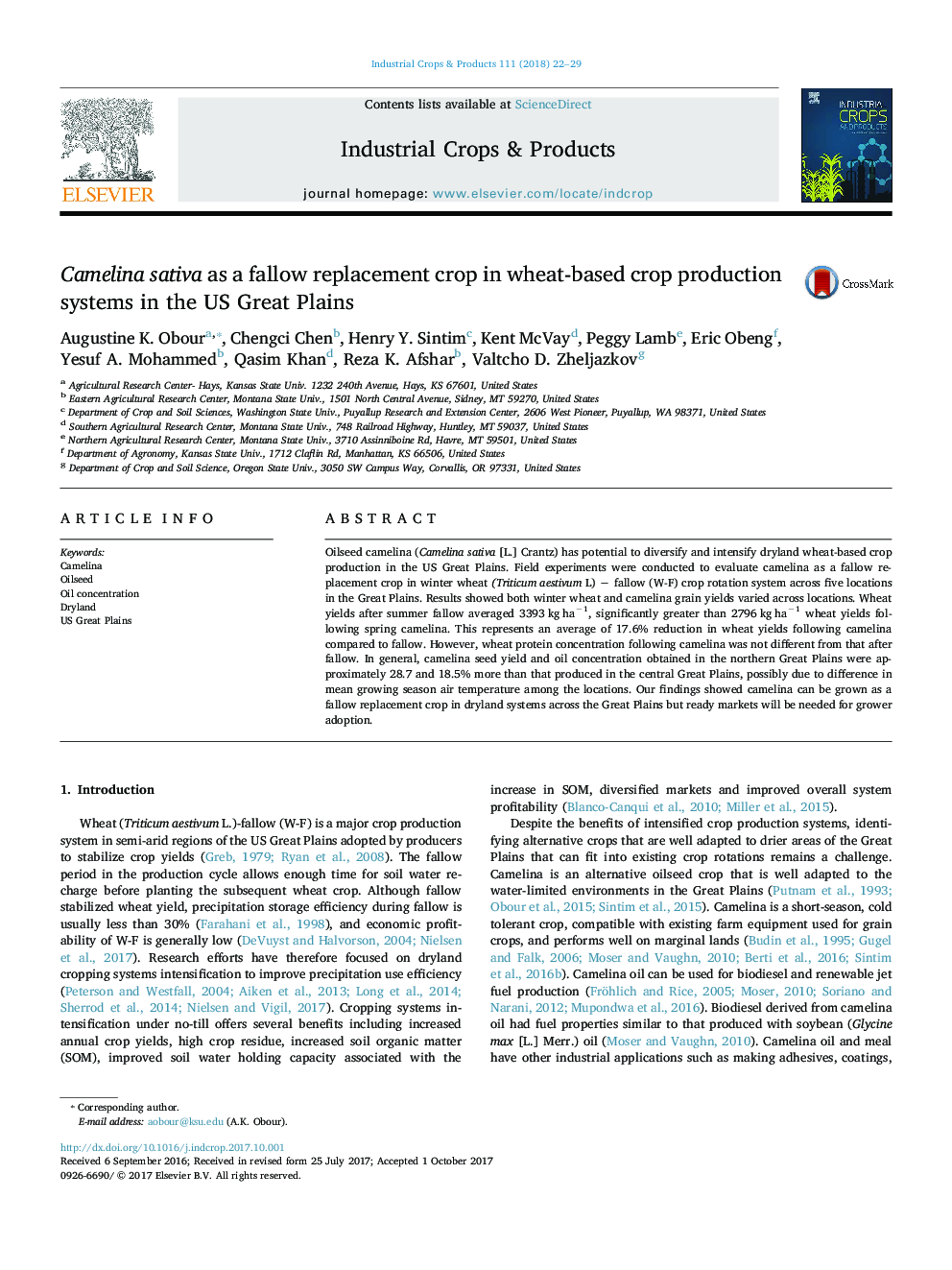| Article ID | Journal | Published Year | Pages | File Type |
|---|---|---|---|---|
| 5761639 | Industrial Crops and Products | 2018 | 8 Pages |
Abstract
Oilseed camelina (Camelina sativa [L.] Crantz) has potential to diversify and intensify dryland wheat-based crop production in the US Great Plains. Field experiments were conducted to evaluate camelina as a fallow replacement crop in winter wheat (Triticum aestivum L) â fallow (W-F) crop rotation system across five locations in the Great Plains. Results showed both winter wheat and camelina grain yields varied across locations. Wheat yields after summer fallow averaged 3393 kg haâ1, significantly greater than 2796 kg haâ1 wheat yields following spring camelina. This represents an average of 17.6% reduction in wheat yields following camelina compared to fallow. However, wheat protein concentration following camelina was not different from that after fallow. In general, camelina seed yield and oil concentration obtained in the northern Great Plains were approximately 28.7 and 18.5% more than that produced in the central Great Plains, possibly due to difference in mean growing season air temperature among the locations. Our findings showed camelina can be grown as a fallow replacement crop in dryland systems across the Great Plains but ready markets will be needed for grower adoption.
Related Topics
Life Sciences
Agricultural and Biological Sciences
Agronomy and Crop Science
Authors
Augustine K. Obour, Chengci Chen, Henry Y. Sintim, Kent McVay, Peggy Lamb, Eric Obeng, Yesuf A. Mohammed, Qasim Khan, Reza K. Afshar, Valtcho D. Zheljazkov,
